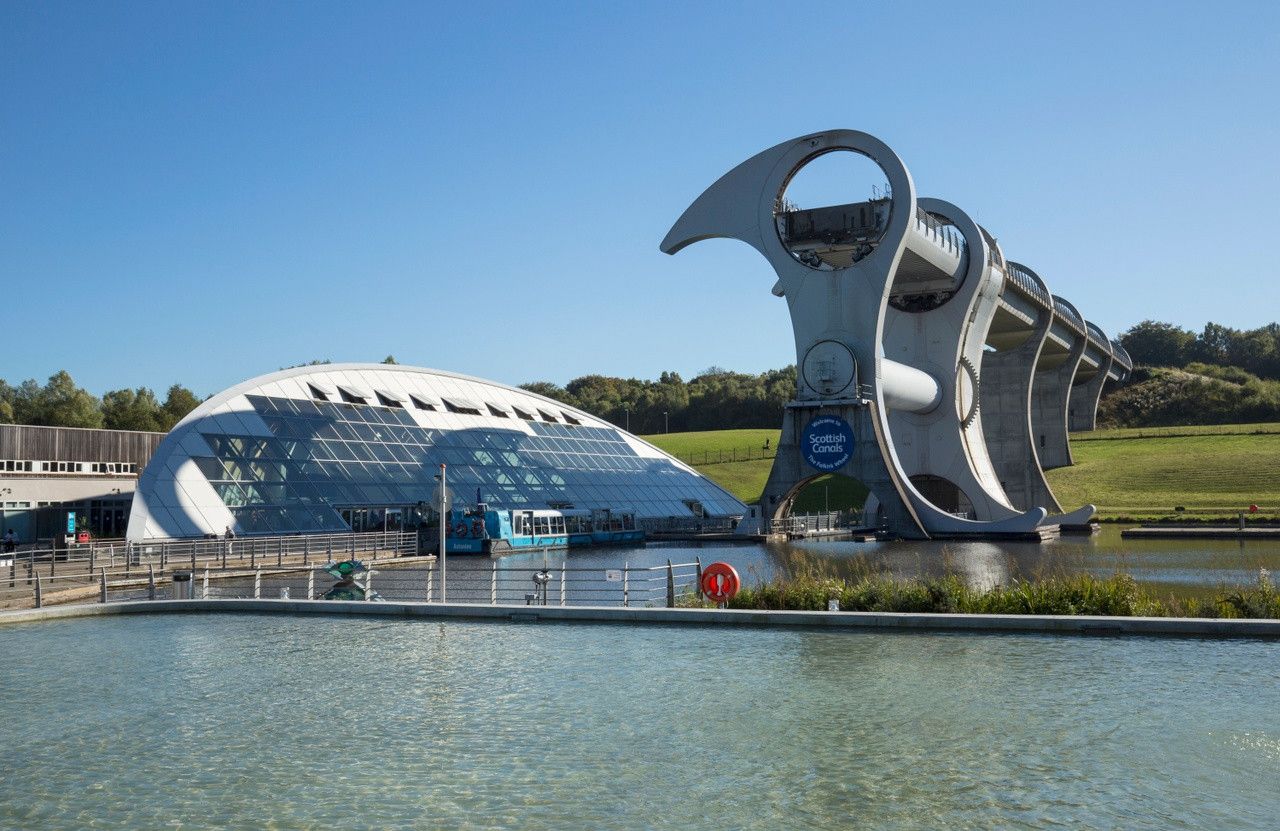From astronomer Williamina Fleming to geneticist Charlotte Auerbach, from inventor Alexander Graham Bell to engineer John Logie Baird, Scotland has always nurtured scientific discovery and innovation. Discover some of our favourite science attractions across Scotland to help spark your curiosity and get you inspired!

Falkirk Wheel
If you love Lego or Meccano, then you should make a trip to the world-famous Falkirk Wheel - the world’s first and only rotating boat lift. It is 35 metres tall, which is the equivalent of eight double-decker buses stacked on top of each other. The Wheel is a feat of modern, sustainable engineering, it only uses 1.5kWh of energy to turn, which is about the same amount it takes to boil eight household kettles. The visitor centre takes you through the science of wheel to explain how it works, and then you can experience it for yourself by taking a trip along the canal and onto the Falkirk Wheel itself.

Dynamic Earth
Travel through time, explore aquatic wonders, fly above icy glaciers, and watch volcanoes erupt around you. You can do all this (and a lot more) at Dynamic Earth’s incredible 4D interactive adventures. At this Edinburgh attraction, natural history comes alive in a way you won’t have seen before to teach you about the world around us, from how it came to be, to how it can house the more than 8 million species that currently call this little planet home. Dynamic Earth looks at how science connects us across countries and continents, and why we need to look after our planet. A perfect day out if you loved David Attenborough’s Planet Earth series.

RRS Discovery
The world-famous historic ship, RRS Discovery based at Discovery Point, Dundee, undertook the world's first scientific research in Antarctica. The resulting study is still used to this day as benchmark data by climate change scientists. It also undertook the work that led to the world's first whale conservation movement, with whales now known to have a surprisingly high impact on climate change. Through galleries, videos, artefacts, interactive exhibits and exploring the ship herself, you can find out about Captain Robert Falcon Scott and how his team carried out groundbreaking scientific research. They discovered over 500 new species, mapped hundreds of miles of unknown coasts, mountain ranges and glaciers and made remarkable magnetic measurements, auroral observations and seismic recordings. The RRS Discovery is a must-see for any budding marine biologists or geology-fanatic, and you can always pop into the V&A Dundee next door while you’re there.
National Museum of Flight
If, like us, you also feel the allure of aviation then the National Museum of Flight should be on your scientific Scotland bucket-list. The museum takes you on a tour of the history of aircraft and the role that these aircraft have played in our own history. Learn about aircraft production and engineering, how on-board objects such as seating are designed and how the jet engine was developed (and how this enabled us to fly commercially). You can currently learn about the steps modern engineers are taking to make air travel less damaging to the environment with their new museum trail called ‘Flying into the Future’.

Camera Obscura and World of Illusions
The science of light, imagery and technology is covered across the five floors of Edinburgh’s Camera Obscura and World of Illusions. On floor two the Vortex Tunnel and Mirror Maze will make you feel that your eyes are playing tricks on you. On floor three you can use the thermal camera, view 3D cityscapes and peer through microscopes to find new ways of looking at the world. Floor four explores how light can create fascinating visual effects, from holograms to the melodical Light Harp. Up on floor five you can learn magician’s secrets, with classic optical illusions, and a few new ones you won’t have seen before. Finally, on floor six you can view the city of Edinburgh like never before through a range of telescopes and view the camera obscura show, just as the first audiences did in 1835 - although back then it was situated on Calton Hill!

Dark Sky Parks
We might not be able to take holidays to space just yet, but with Scotland’s stunning Dark Sky Parks we still have plenty of opportunities to explore the stars for ourselves. In fact, Scotland has some of the largest expanses of dark sky in Europe. Our Dark Sky Discovery Sites are places which experience low (or even no) light pollution, meaning the ink-black night sky can reveal stars, meteors, and even distant planets. We think the Tomintoul & Glenlivet - Cairngorms Dark Sky Park is our favourite, not only is it the darkest park in the UK but also the most northerly Dark Sky Park in the world! Or if you don’t mind the journey, you can head out to the Isle of Coll, Scotland’s Dark Sky Island which is located 32km from the nearest streetlight and offers beautiful night-sky clarity. A perfect night out for any space-obsessed, aspiring astronaut-in-training.

The Science Centres
A list of Scotland’s top science attractions wouldn’t be complete without our world-class science centres. Situated in Dundee, Aberdeen and Glasgow, the centres cover all matter of curiosities, from an augmented reality operation theatre where you can try your hand at heart surgery at Dundee Science Centre, to building computers in the Make-It Zone at Aberdeen Science Centre, to creating colourful shadows at Glasgow Science Centre, there are hundreds of interactive exhibits to nurture your curiosity and inspire you to think about the world differently.
We've only been able to include a handful of the most interesting science attractions that Scotland has to offer. Do you agree with our picks, or do you have a favourite Scottish science attraction that doesn't feature on our list? Let us know by tagging us on social media with your top science spots!